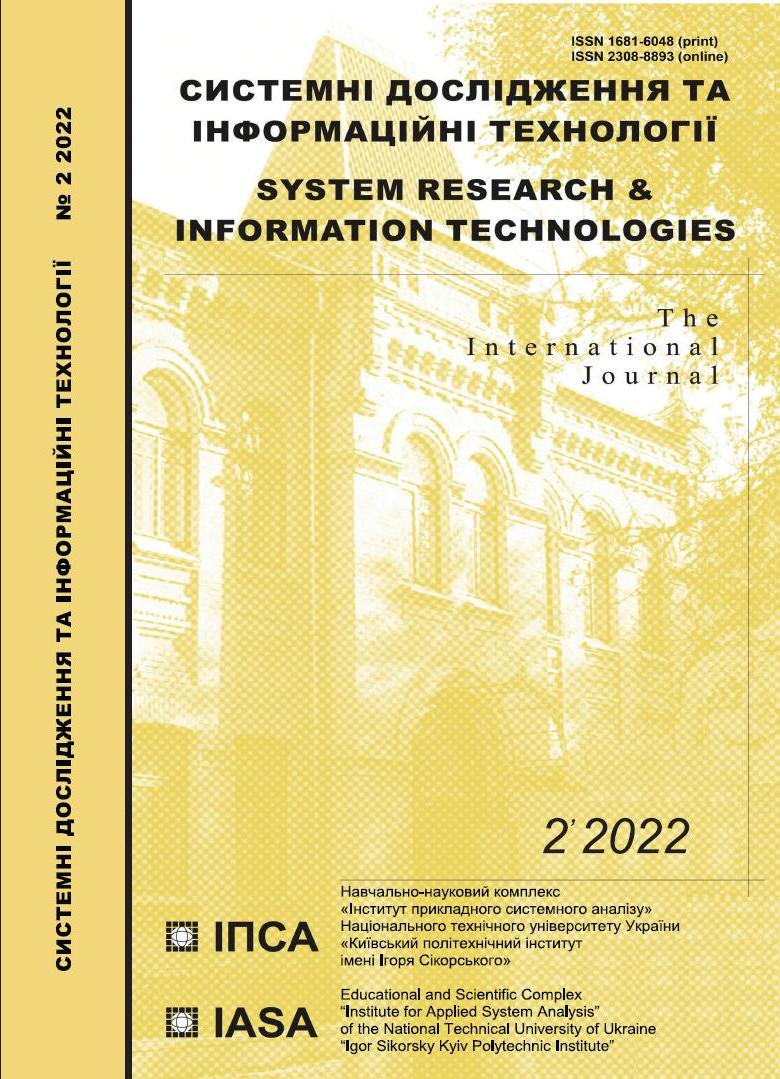Modelling negative thermomechanical effects in reinforced road structures with thermoelastic incompatibility of coating and reinforcement materials
DOI:
https://doi.org/10.20535/SRIT.2308-8893.2022.2.09Keywords:
reinforced asphalt concretes, thermomechanical incompatibility, mathematical modelling, destruction preventionAbstract
The phenomena of the formation of local defects and cracks in asphalt concrete pavements of roads and bridges are most often observed in climatic zones with large temperature differences during their seasonal and daily changes. To a large extent, this is due to the heterogeneity of the thermomechanical properties of the materials of the coating layers and the base. To prevent these phenomena, reinforcing rods and meshes are introduced into the coating structure. In this work, using the theory of thermoelasticity, it is shown by the method of mathematical modelling that in cases of incompatibility of the thermomechanical characteristics of asphalt concrete materials and reinforcement, additional localized thermal stresses arise in its small vicinity, which, even at moderate temperatures, can reach critical values and lead to local defects and cracks. Since these defects are latent, they cannot always be detected in practice. The presented results of analytic calculation validated these conclusions. They can be used in both road building and composite design.
References
T.G. Beleicheva and K.K. Ziling, “Thermoelastic axisymmetric problem for a two-layer cylinder”, J. Appl. Mech. Technical Physics, 19, pp. 108–113, 1978.
Boubaker Fetiza Ali, Khedoudja Soudani, and Smail Haddadi, “Effect of waste plastic and crumb rubber on the thermal oxidative ageing of modified bitumen”, Road Mat. and Pav., vol. 23, issue 1, pp. 222–233, Dec. 2022.
Brian Hill et al., “Evaluation of low temperature viscoelastic properties and fracture behavior of bio-asphalt mixtures”, International Journal of Pavement Engineering, vol. 19, issue 4, pp. 362–369, 2018.
R.M. Christensen and K.H. Lo, “Solutions for effective shear properties in three-phase sphere and cylinder models”, J. Mech. Phys. Solids., vol. 27, pp. 315–330, 1979.
Christian Karch, “Micromechanical analysis of thermal expansion coefficient”, Modeling and Numerical Simulation of Material Science, vol. 3, pp. 1–15, 2014.
R.M. Christiansen, Mechanics of Composite Materials. Wiley: New York, NY, USA, 1979.
Gholamali Shafabakhsh, Mohammadreza Aliakbari Bidokhti, and Hassan Divandan, “Evaluation of the performance of SBS/Nano-Al2O3 composite-modified bitumen at high temperature”, Road Mat. and Paves, vol. 22(11), pp. 2523–2537, 2021.
R.B. Hetnarski and J. Ignaczak, Mathematical Theory of Elasticity. New York: Taylor and Francis, 2004.
Jorge Pais et al., “The adjustment of pavement deflections due to temperature variations”, International Journal of Pavement Engineering, vol. 21, issue 13, pp. 1585–1594, 2020.
J.W. Ju and T.M. Chen, “Effective elastic moduli of two-phase composites containing randomly dispersed spherical inhomogeneities”, Acta Mech., 103(1), pp. 123–144, 1994.
A.D. Kovalenko, Thermoelasticity: Basic Theory and Applications. The Netherlands: Wolters-Noordhoff Groningen, 1972.
Marcela Fiedlerova, Petr Jisa, and Kamil Stepanek, “Using various thermal analytical methods for bitumen characterization”, International Journal of Pavement Research and Technology, vol. 14, issue 4, pp. 459–465, 2021.
Md Amanul Hasan and Rafiqul A. Tarefder, “Development of temperature zone map for mechanistic empirical (ME) pavement design”, Journal of Pavement Research and Technology, vol. 11, issue 1, pp. 99–111, 2018.
Mirosław Graczyk, Józef Rafa, and Adam Zofka, “Pavement modelling using mechanical and thermal homogenization of layered systems”, Roads and Bridges - Drogi i Mosty, 17(2), pp. 141–157, 2018.
W. Nowacki, Thermoelasticity; 2 nd ed. Oxford: PWN – Polish Scientific Publishers, Warsaw and Pergamon Press, 1986.
Dian M. Setiawan, “The role of temperature differential and subgrade quality on stress, curling, and deflection behavior of rigid pavement”, Journal of the Mechanical Behavior of Materials, vol. 29, issue 5–6, id.10, 12 p.
Tarn Minh Phan, Tri Ho Minh Le, and Dae-Wook Park, “Evaluation of cracking resistance of healed warm mix asphalt based on air-void and binder content”, Road Materials and Pavement Design, vol. 23, issue 1, pp. 47–61, 2022.
D.E. Carlson, “Thermoelasticity”, in Truesdell C. (ed) Encyclopedia of physics, vol. Vla/2: mechanics of solids, Springer, Berlin, 1972.
Yang Liu, Zhendong Qian, and Dong Zheng, “Meng Zhang Interlaminar thermal effect analysis of steel bridge deck pavement during gussasphalt mixture paving”, International Journal of Pavement Engineering, vol. 20, issue 11, pp. 1323–1335, 2019.
Yingjun Jiang, Changqing Deng, Zhejiang Chen, and Yuhang Tian, “Evaluation of the cooling effect and anti-rutting performance of thermally resistant and heat-reflective pavement”, International Journal of Pavement Engineering, vol. 21, issue 4, pp. 447–456, 2020.

